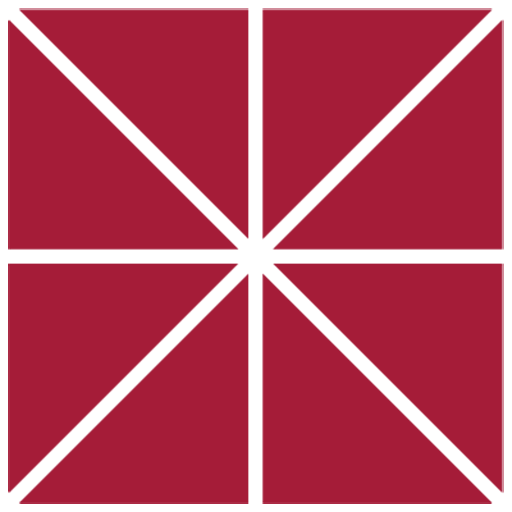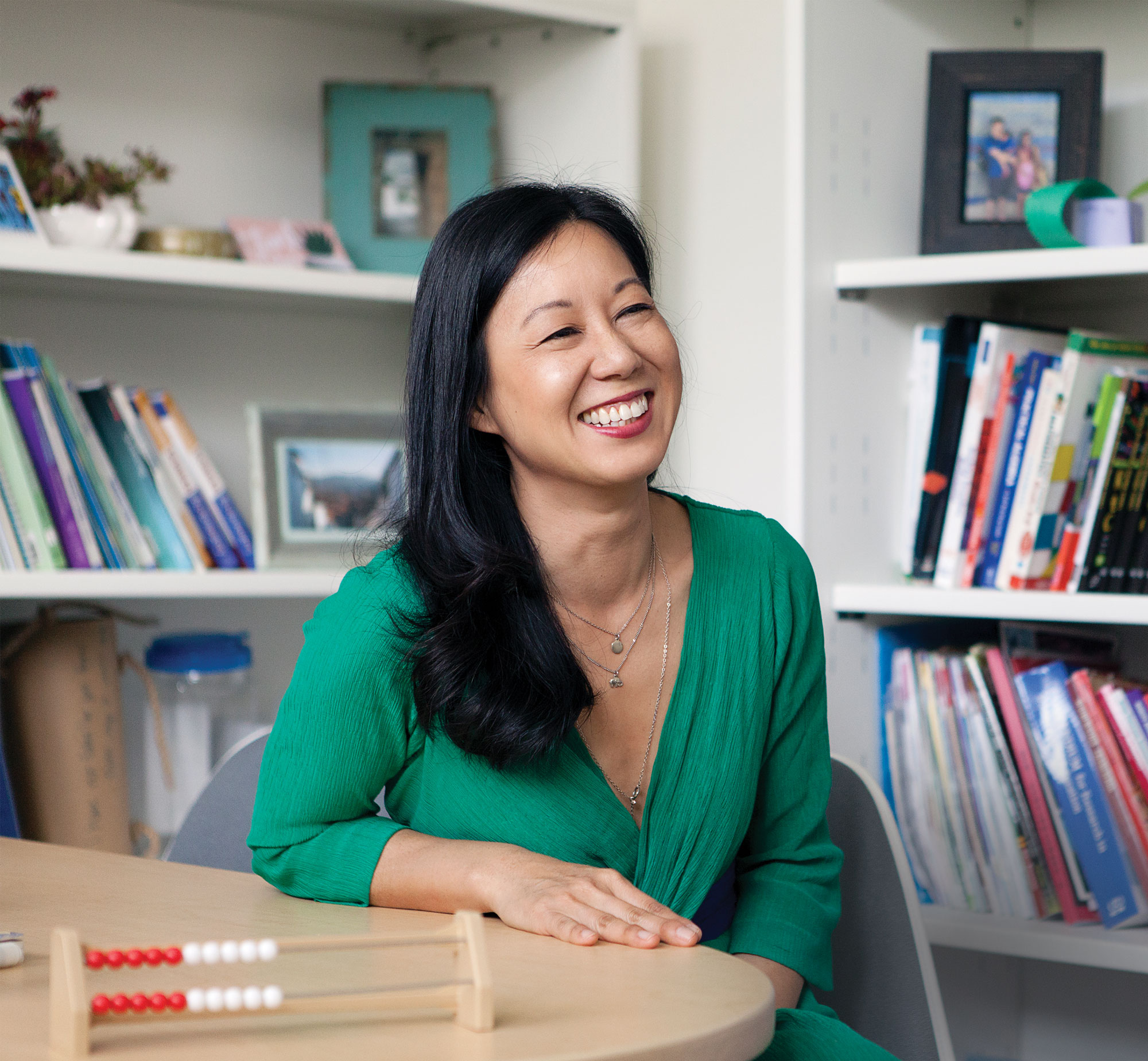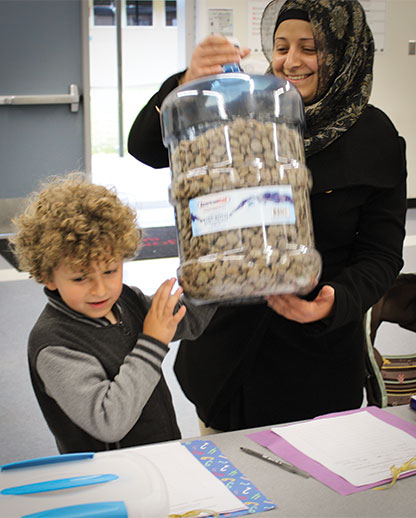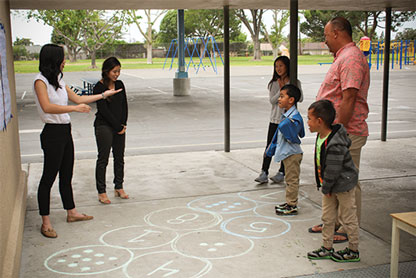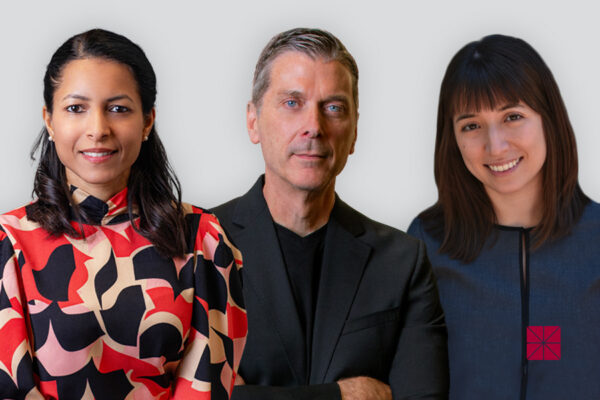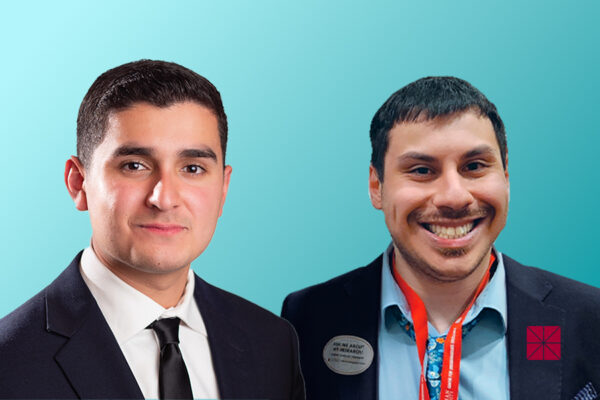Changing +
+ Math forGood
Cathery Yeh's Growing Coalition of Researchers and Educators Builds Equity By Reimagining The Mathematics Classroom.
Story by Heera Kang+
Cathery Yeh’s excitement is palpable as she addresses the room full of K-12 educators at the Better Together: California Teachers Summit.
“We need to move away from fi xing students to fixing the environment,” Yeh says. “We should be designing math classrooms with the idea that there is no norm. You’re going to have a diverse group. And what we know is that diversity is beautiful.”
This keynote speech is just one of the many ways that Yeh, Ph.D. and Chapman University assistant professor in the Attallah College of Education, has advanced the movement to battle inequalities in education. Her primary vehicle for change: math. Why math? “Because mathematics holds power,” Yeh says.
When we think back to our own school days, who do we remember as the smart kids? Most likely they’re the elite few who did the best in math. Yeh points out that high achievement in mathematics sets students on a course for success in academics and in life.
“Math is power. Math carries status,” says Yeh. “We have to shift the way we teach it so every child can see how brilliant they are.”
But Yeh noticed that powerful math experiences were not available to many students, disproportionately leaving out under-resourced communities, non-native English speakers and students with disabilities, for example.
"Math is power. Math carries status."
+
"We have to shift the way we teach it so every child can see how brilliant they are."
“Schools are more segregated than ever,” says Yeh, who taught elementary, dual-language classrooms in the Los Angeles urban core for 10 years. During that period she made over 300 home visits to immerse herself in the community and engage parents and guardians.
In classrooms, students are often assigned labels — high, low, smart, struggling. The labels teachers assign to students, Yeh explains, affect student achievement more than any other teacher-student interaction factors in education.
To address this inequality, Yeh designed a new math methods course for graduate students in the Attallah College of Educational Studies Teacher Education Program. Thanks to the support of Chapman’s Pedagogical Innovations Grant, the program involves a hands-on, community-based component taking Chapman students into local K-12 classrooms. Combined with scholarly research done in close collaboration with Yeh, the program is designed for maximum impact.
“In traditional math methods courses in teacher education programs, students learn about the math content, children’s mathematics thinking and how to teach—all at the university,” explains Yeh. “Our Chapman graduate students have opportunities to learn how to teach mathematics in school classrooms, with teachers and with groups of students. This kind of authentic learning will have a larger impact on our students and in our local schools.”
+ Student Ambassadors
Cathery Yeh’s community-based teaching program will expand to include undergraduates starting in 2020, but graduate students are already thriving in the program, often having opportunities to co-publish and present on research together with faculty.
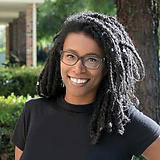
+
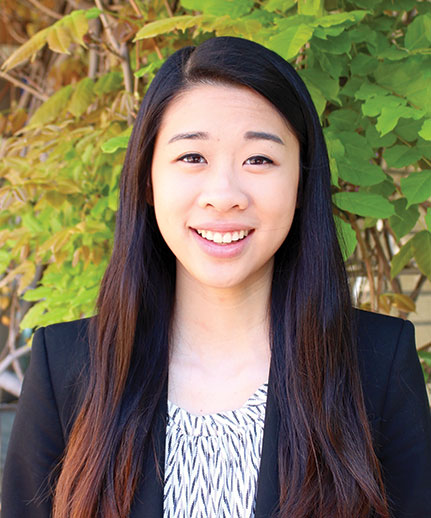
+
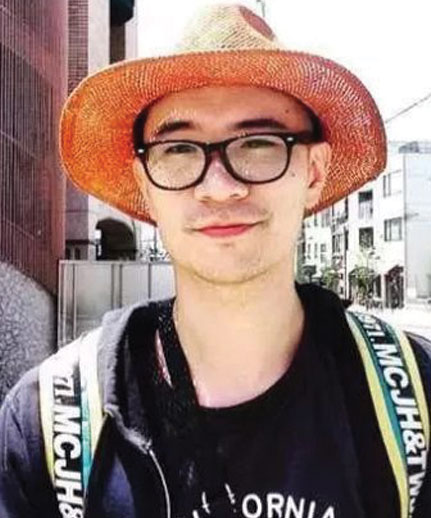
+
Click on a student’s headshot to read their story
Brande Otis (M.A. ’18)
co-published an article with Yeh entitled “Mathematics for Whom: Reframing and Humanizing Mathematics.”
Otis says: “At Chapman, my major focus was equity in education and understanding how power gets transmitted in various ways in schools. I am also interested in understanding the role of positive Black identity in the academic trajectories of young Black people.
I reached out to Dr. Yeh because I was interested in her work around mathematics curriculum and social justice, and I wanted to explore how curriculum could be used as a tool to maintain power and privilege. I interned in local schools, where I worked closely with teachers around supporting students with IEPs, behavior plans and meeting the needs of young students. I saw rather closely the ways in which anti-Blackness, power and privilege permeated into the Special Education system, and in curriculum.
Working with Dr. Yeh and the classroom teachers, I was exposed to the ways we might challenge dominant power narratives in schools, and work towards incorporating student experience, voice and perspective in the ways we teach and understand mathematics. I was a witness to the power of inclusive and engaging pedagogical practices when working with students of color.
Additionally, Dr. Yeh and I collaborated on a research study on word problems from 3rd and 5th grade math textbooks. Using critical theory, we examined the ways in which word problems might communicate dominant narratives about who students were ‘supposed’ to be, and who they were ‘presumed’ to be, particularly in mathematics. Through my work in the program, I understood how to better perform ethical and responsive research.”
Otis is continuing her studies in equity in education as a Ph.D. student at UCLA.
Ansley Wong (M.A. ’19)
was recently awarded a Fulbright teaching fellowship and will be spreading the math movement internationally.
Wong and Yeh will soon publish the journal article “Teaching for Excellence and Equity in Mathematics,” on language and learning in bilingual math classrooms.
The professor and student also paired up to present on culturally and linguistically responsive teaching pedagogies at the California Mathematics Council-South national education conference to more than 3,000 attendees.
“Empowering students in mathematics is so important in today’s society,” says Wong. “My experiences at Chapman have allowed me to look at teaching through a different lens.”
Lufei Lin
an international student in the program, led a webinar on WeChat, the most popular social media platform in China. “My presentation started with this question: What does it mean to be good at math? The main part of the presentation was about the tools I used in the classroom. It is so fun to share what I learned, and it helps me reflect on my learning,” says Lin.
The main part of his presentation (which was in Chinese) was on mathematics practice standards in the United States.
The foundational element of the methods course is designing what Yeh describes as “rich mathematical experiences” that leverage the knowledge base of all students, regardless of background, English language proficiency or ability status. The instruction is grounded in problem solving, reasoning, play, and, what Yeh argues is most important, real-world application.
The math methods course builds on Yeh’s research in special education. She and her co-principal investigator, Trisha Sugita, Ph.D., received Chapman’s Faculty Opportunity Grant to pioneer and conduct a preliminary evaluation of a technology-facilitated model to improve special education math instruction.
Often special education teachers are given the district math textbook and told to teach students with a wide range of ability. “The teachers tell me they can’t use the textbook because it doesn’t meet anyone’s needs,” says Yeh.
The research team meets monthly with these teachers and co-teach in their classrooms, looking at the existing curriculum and building learning experiences based on the children’s current understanding.
As an illustration, Yeh mentions Jason, 4, from one of these classrooms. One day, his teacher notices that Jason has neatly arranged the peas on his lunch plate in what look like 10 frames, a visual model for learning basic math facts.
Jason points to the peas, beaming proudly, and says, “I made a group of 10 and a group of three. And it’s 13.” The teacher praises him for showing his math understanding. This could be chalked up to just another precocious share-worthy moment, but it’s noteworthy that Jason is diagnosed with autism and ADHD and is in a self-contained special education classroom.
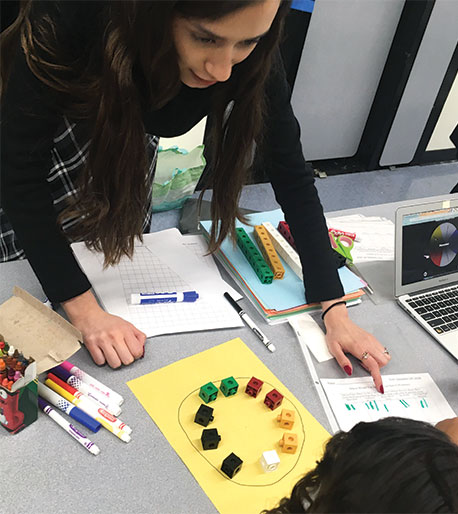
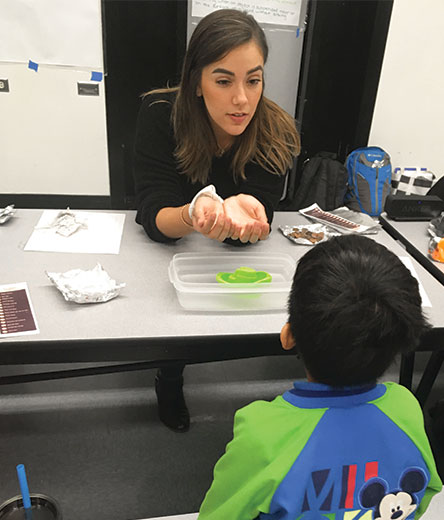
+
At Salk Elementary School, graduate student Maribel Barrios, top, asks, “What’s your favorite place to visit in your local community?” She uses this real-world scenario to teach about gathering data and creating graphs to represent data.
Graduate student Marissa Fierro, bottom, demonstrates a STEAM (Science, Technology, Engineering, Art, Math) activity incorporating basic counting skills with explorations on density and mass. The question: How much weight can aluminum-foil boats float?
Yeh mentions another child who, for the first time in six years, is adding and subtracting using the tools and methods from this program. “Some of these students classified with a disability are outperforming their mainstream counterparts in math,” Yeh reports.
In 2017, the National Council of Teachers of Mathematics (NCTM), the world’s largest math education organization, published Yeh’s book, “Reimagining the Mathematics Classroom.” In it, she conveys the need for changing the way math is taught, building knowledge on what students already know rather than disenfranchising large swaths of students with rote learning that’s disconnected from the real world.
After the book held 18 months on its bestseller list, NCTM asked Yeh to join the writing team of mathematics education leaders to write a new book titled “Catalyzing Change.” For this book, Yeh is collaborating with colleagues across three different universities to share research outcomes and provide schools and districts with proven models and methods to put into practice.
“Classroom instruction shouldn’t be designed to get students to only engage in rote calculations – there are calculators to do that,” says Yeh. “Rote memorization isn’t enough anymore.”
Rather, the new generation of math students should be problem solvers, critical thinkers, and active participants in a diverse democracy – ready to use mathematics as a tool to make sense of our world’s pressing problems and create change, she says. “We need a paradigm shift. Every child can problem solve. How can we support teachers in changing their classroom environment to build on each student’s strengths?”
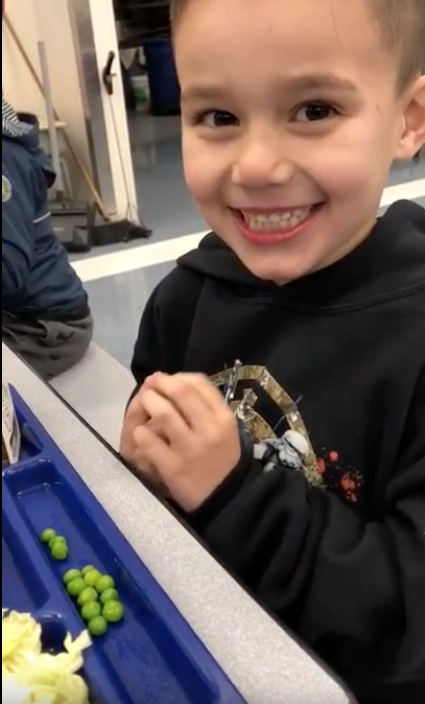
Watch 4-year-old Jason show his math understanding
÷
And the movement lives on
